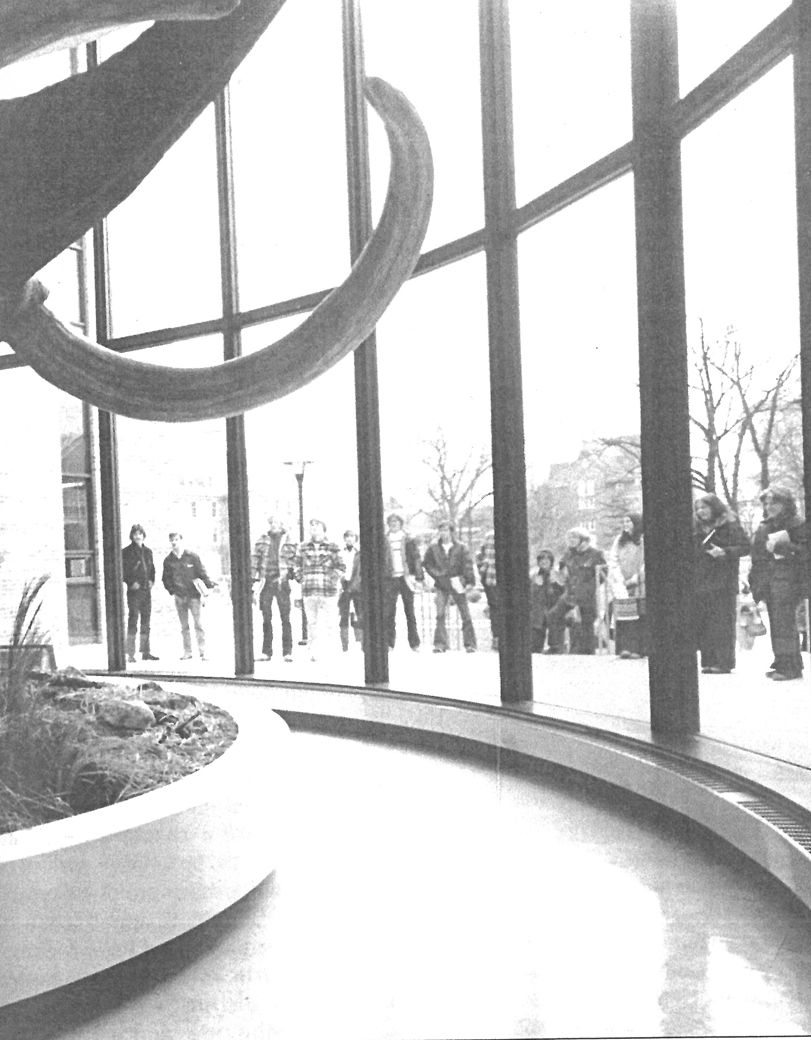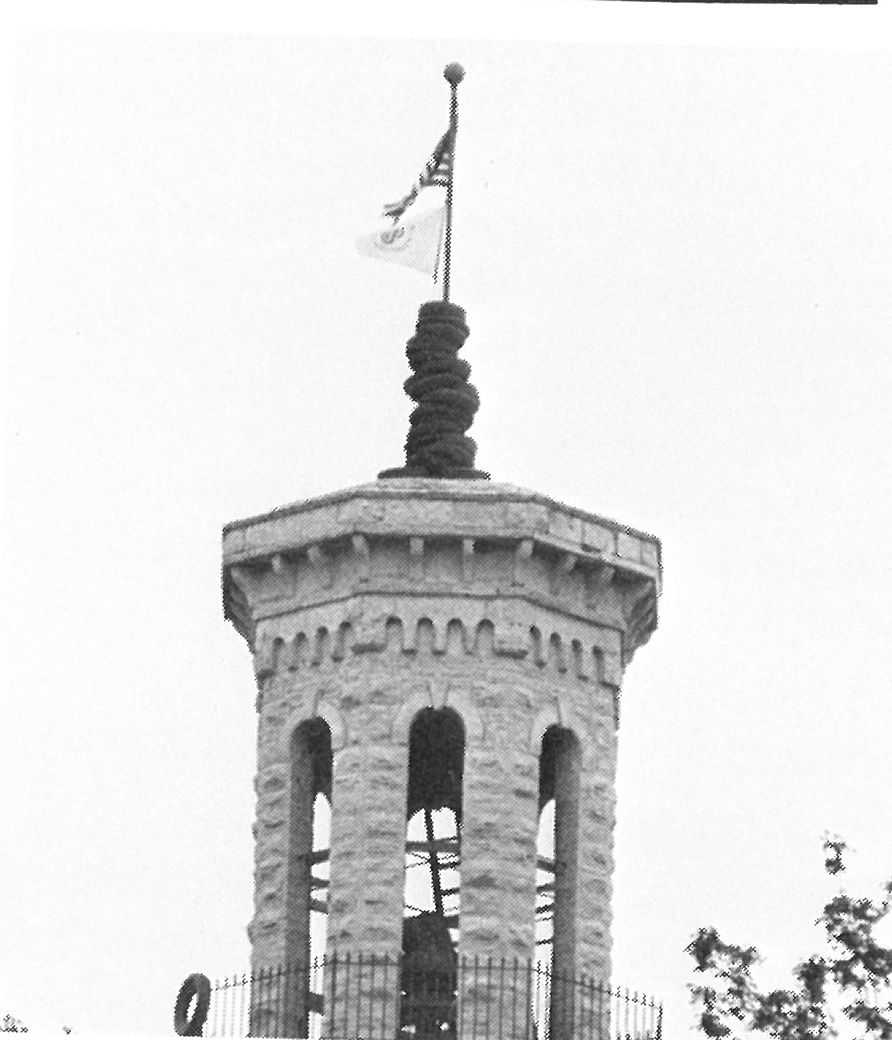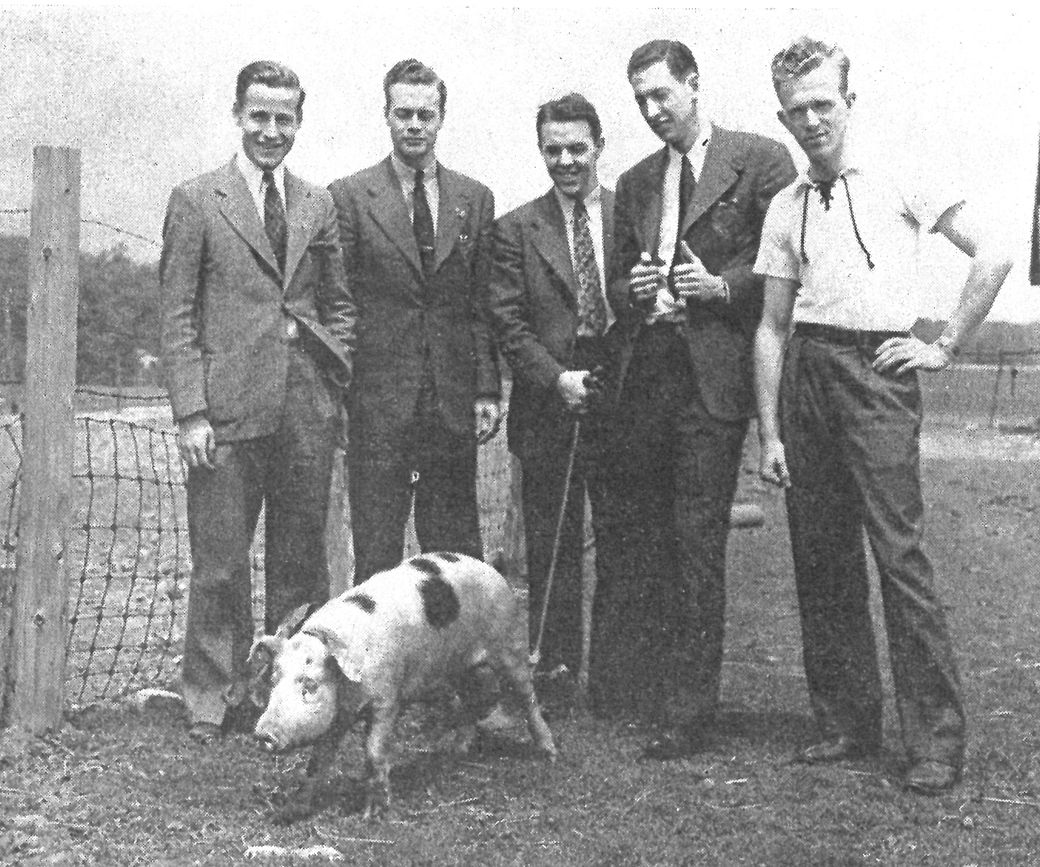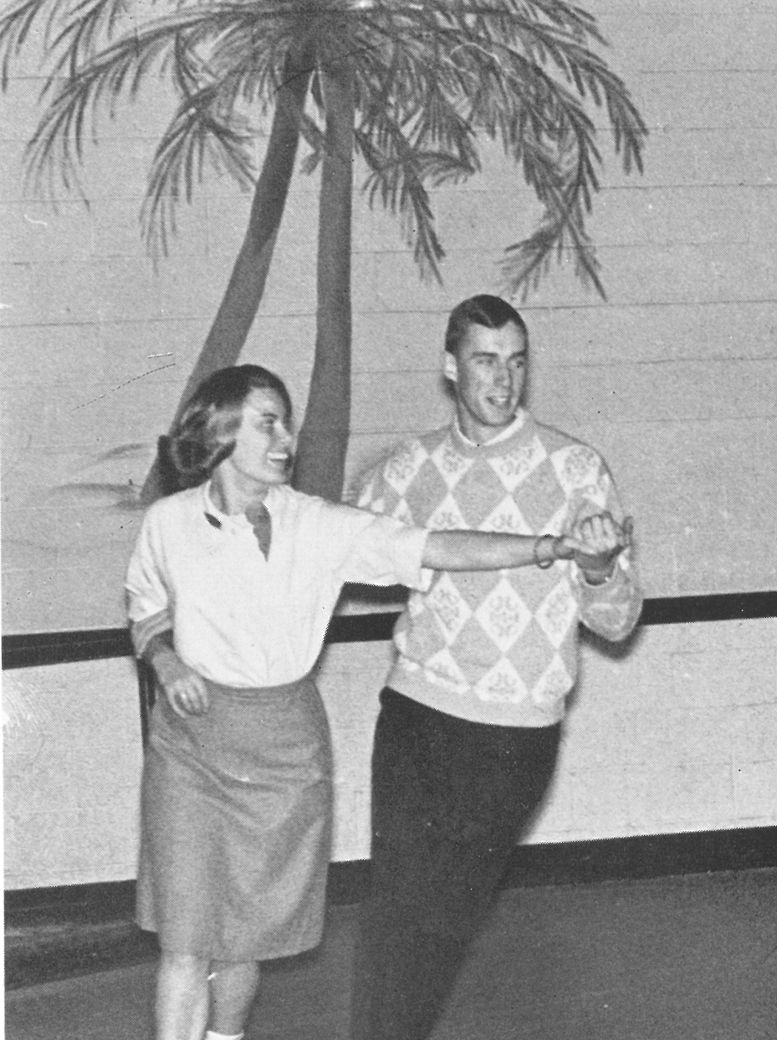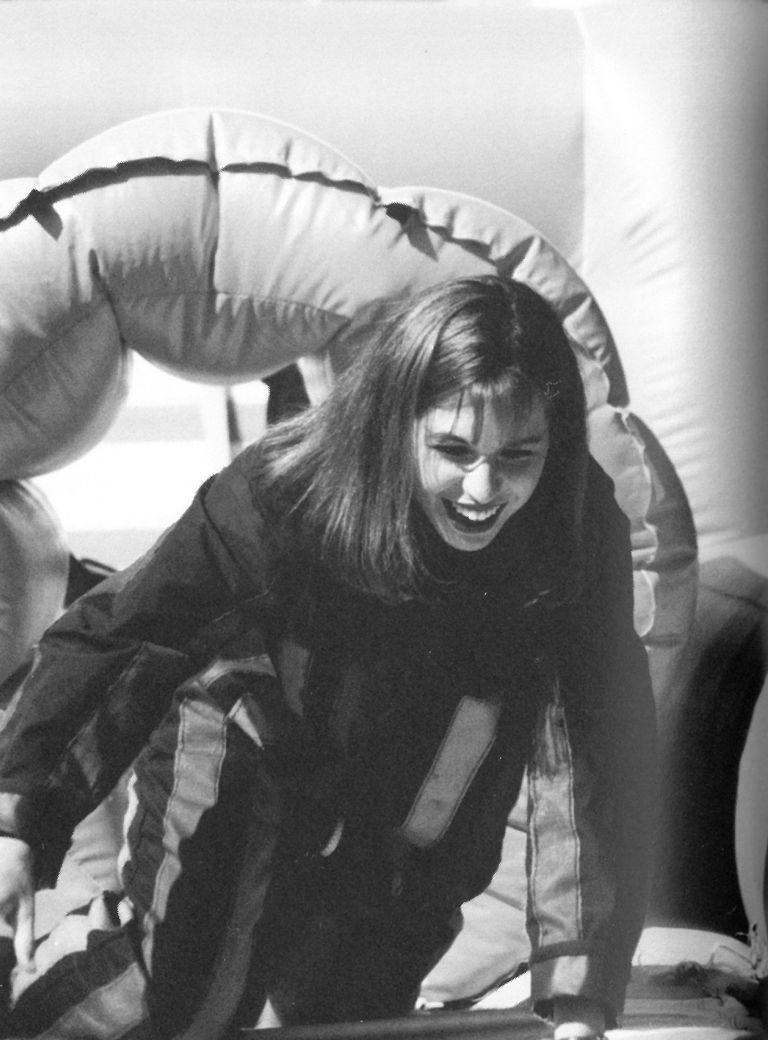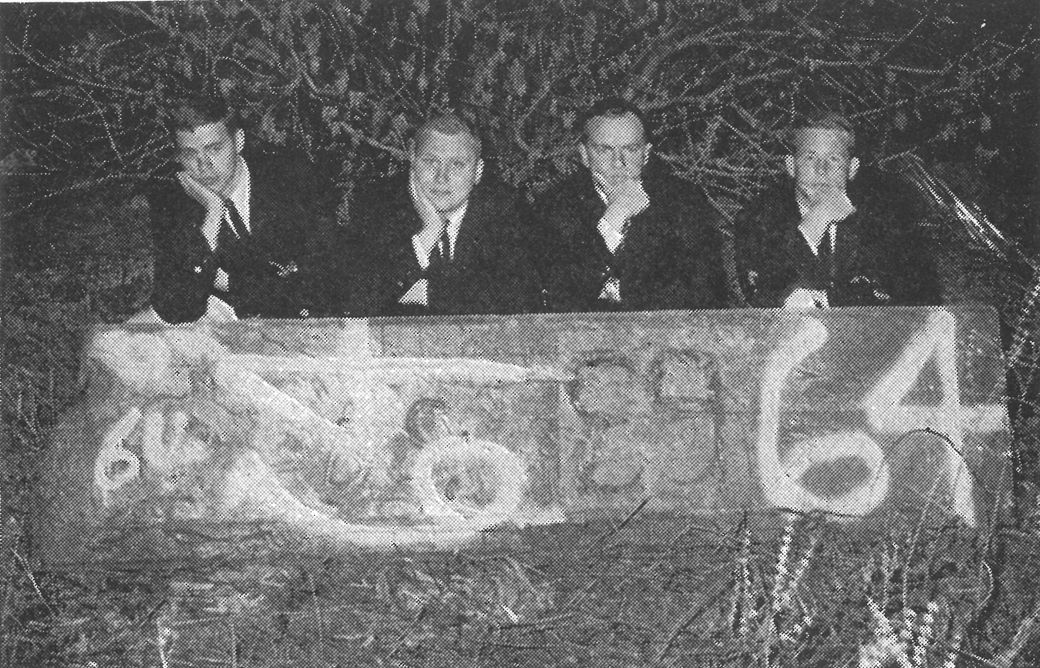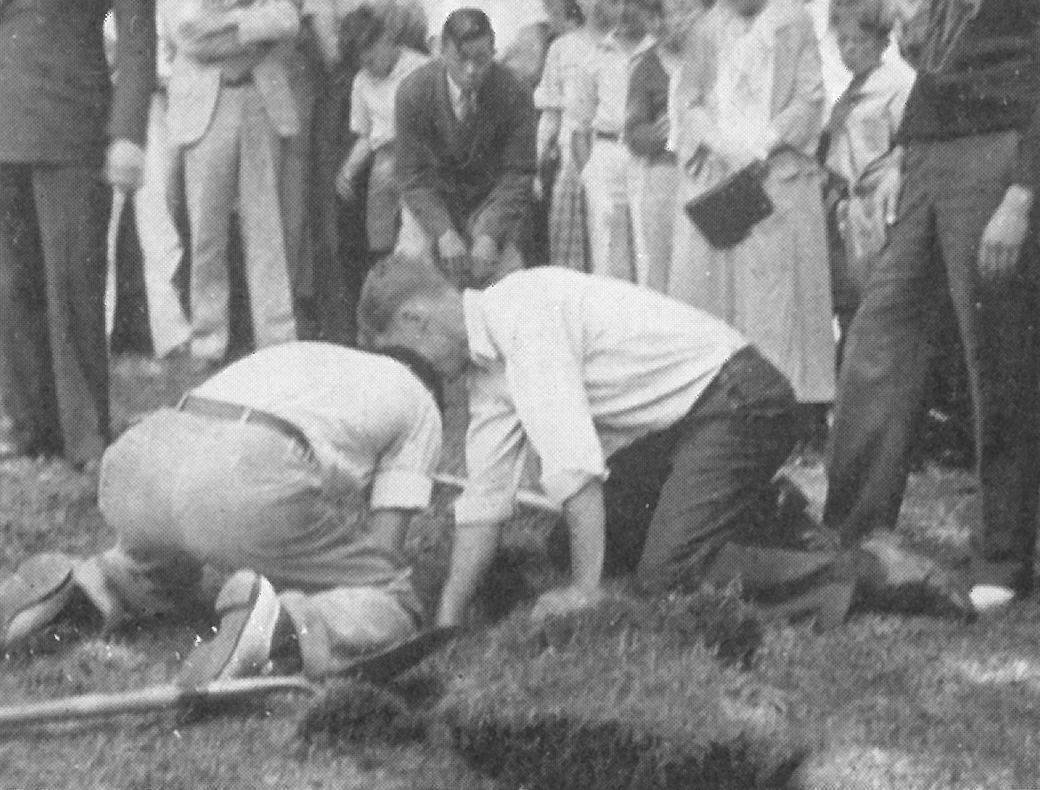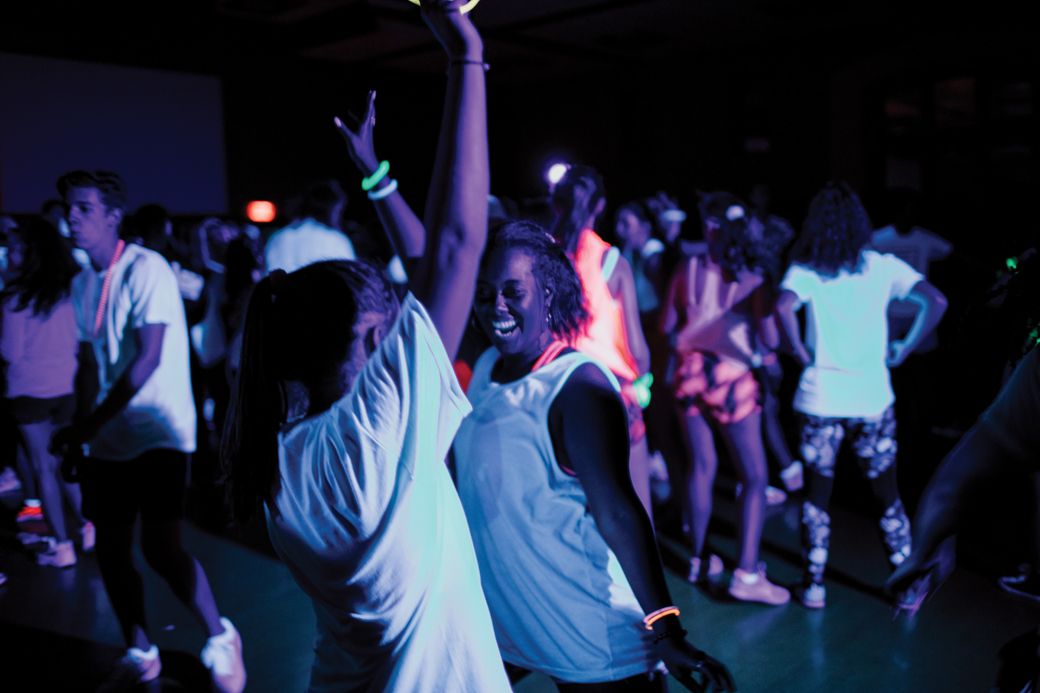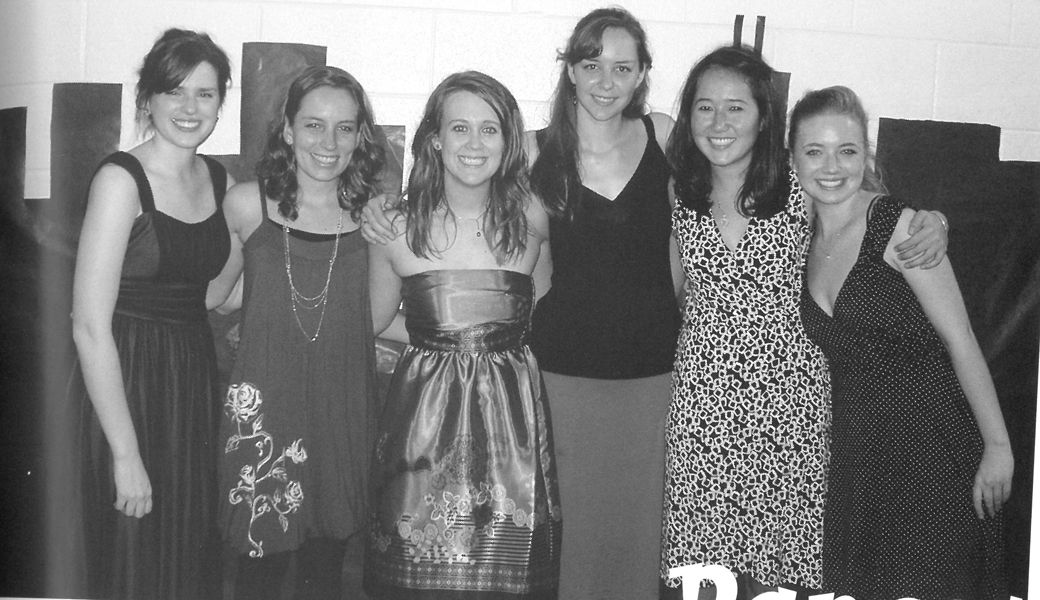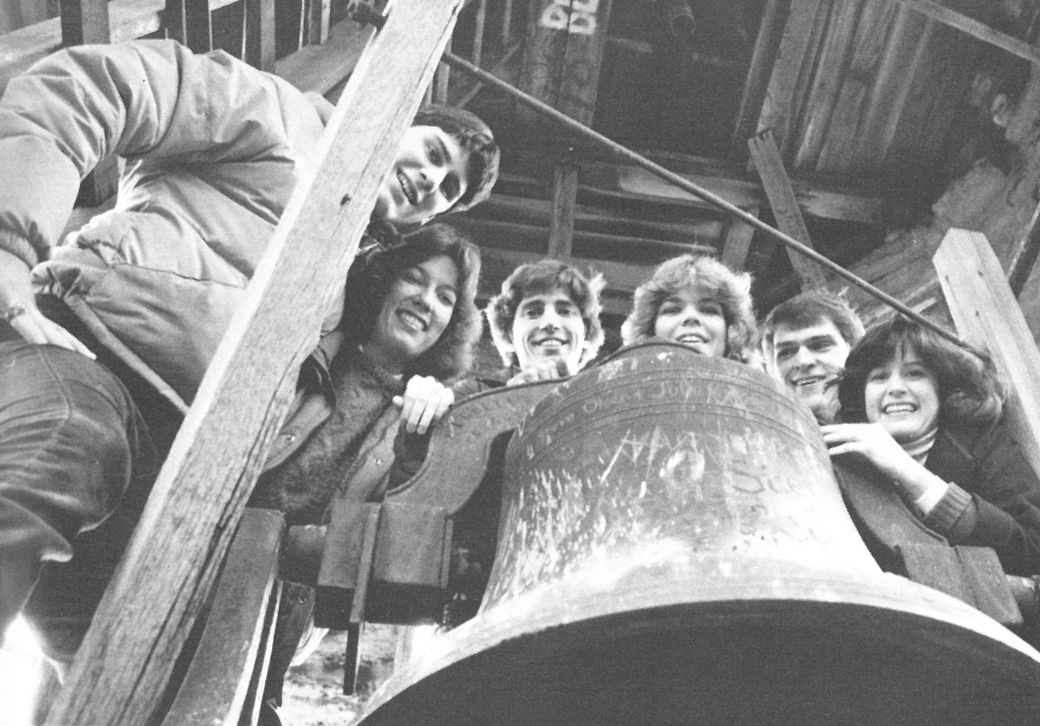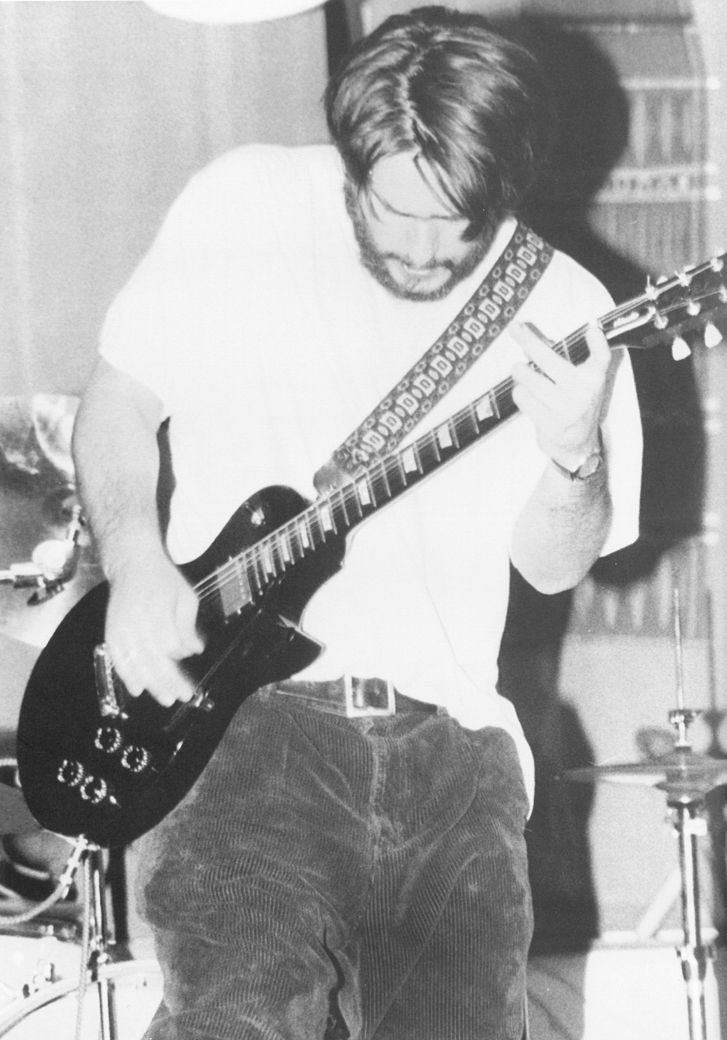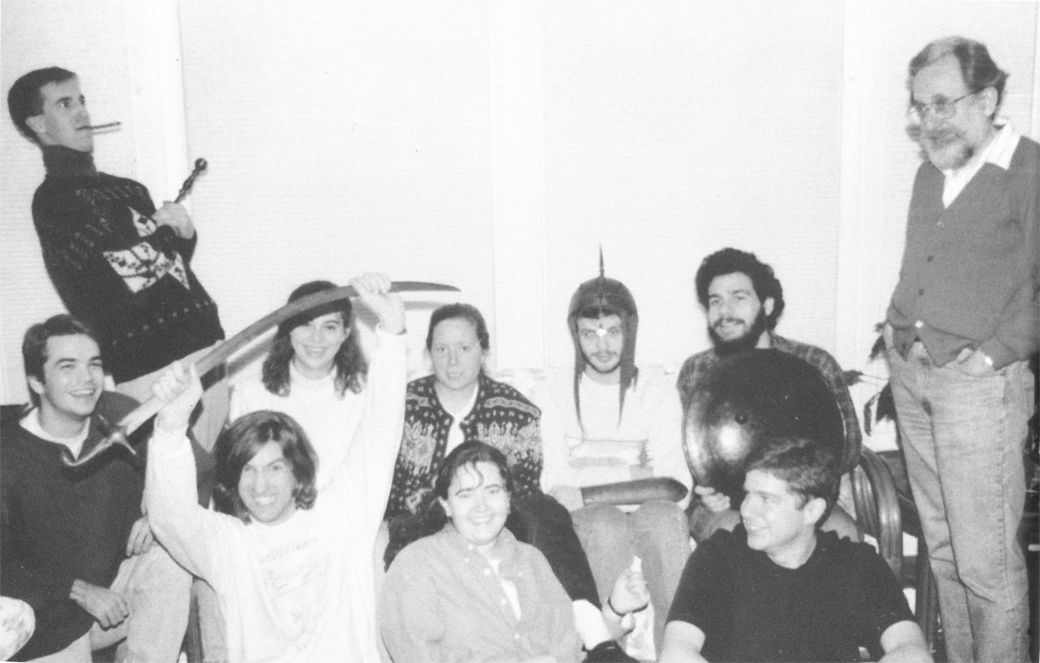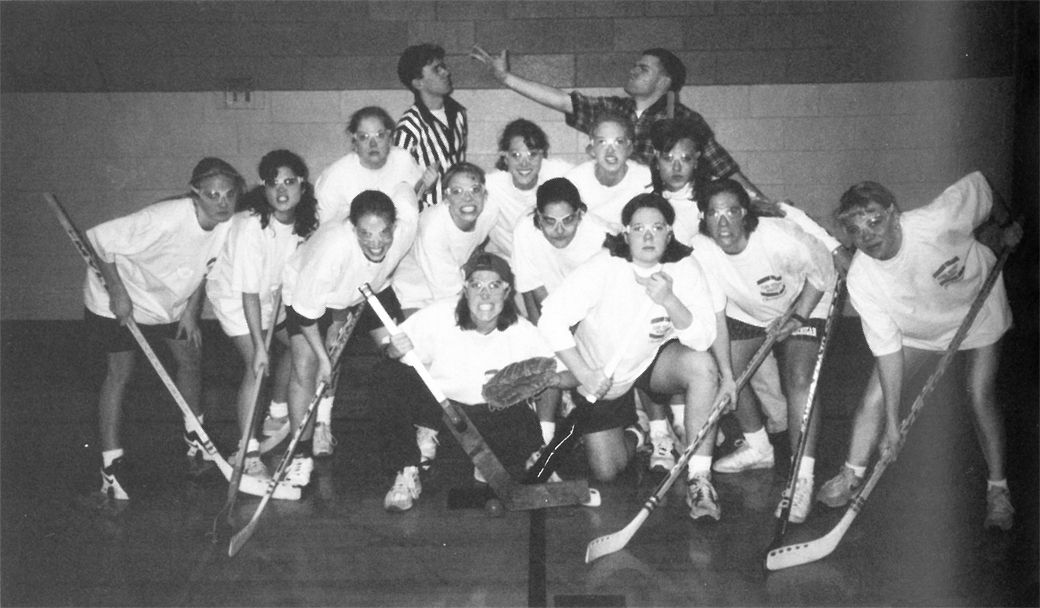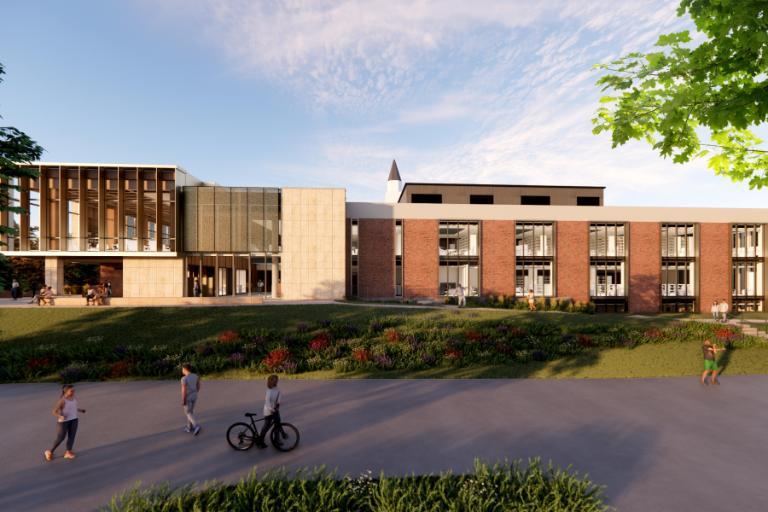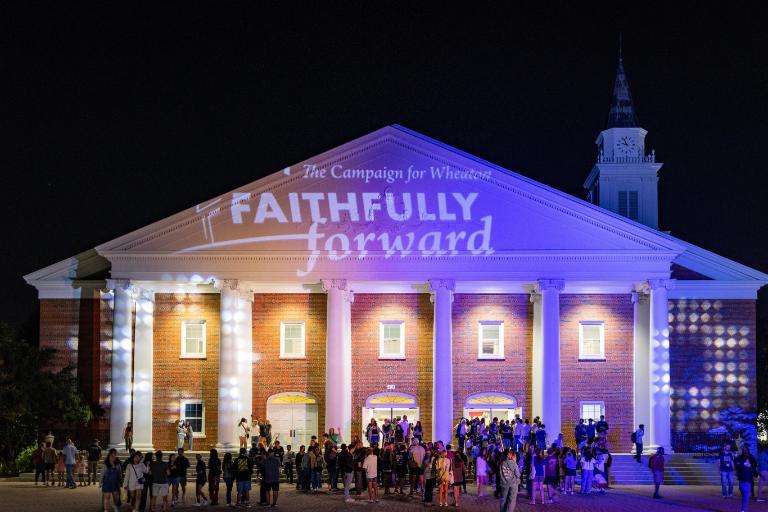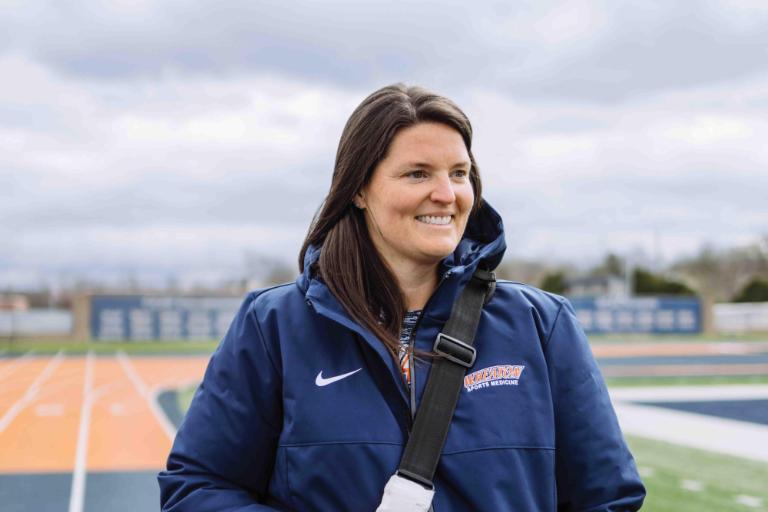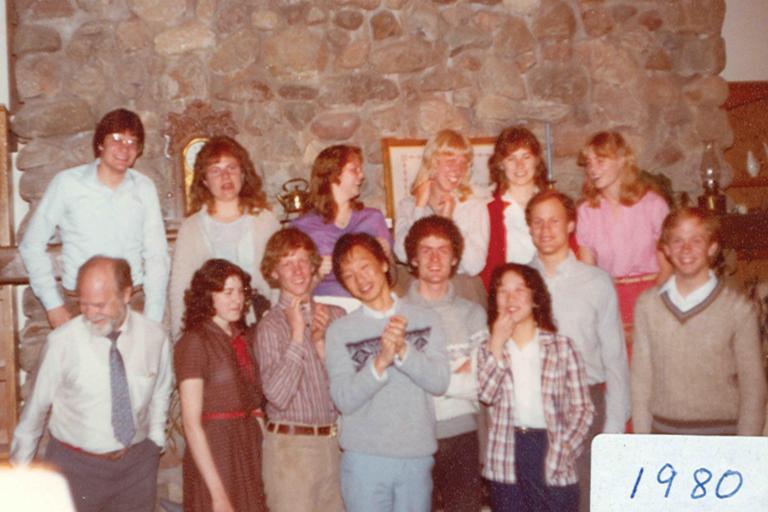Wheaties Have Fun
How Wheaton Students Have Fostered Joy and Amusement Over the Years
Words: Bella McDonald ’24
Photos: Buswell Library Archives & Special Collections, Tower Yearbooks
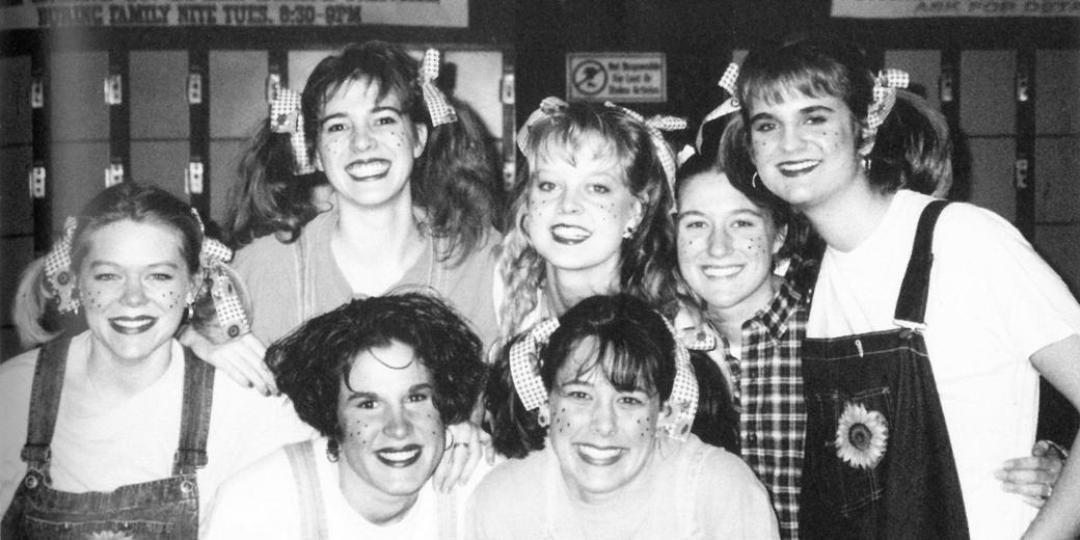
1996
Juniors and seniors liven up a late-night skate with country attire.
Throughout the years, thousands of young adults have traveled from near and far to attend Wheaton College. Despite their varying backgrounds, they have found many things in common—faith, vocational pursuits, extracurricular interests, overlapping life experiences, and as displayed in the following pages, the simple pleasure of having fun together. This feature explores the lighthearted side of campus culture, highlighting just a few of the many events and social activities that have produced belly-aching laughter and joyful grins on the faces of Wheaties for more than a century.
I. Larks
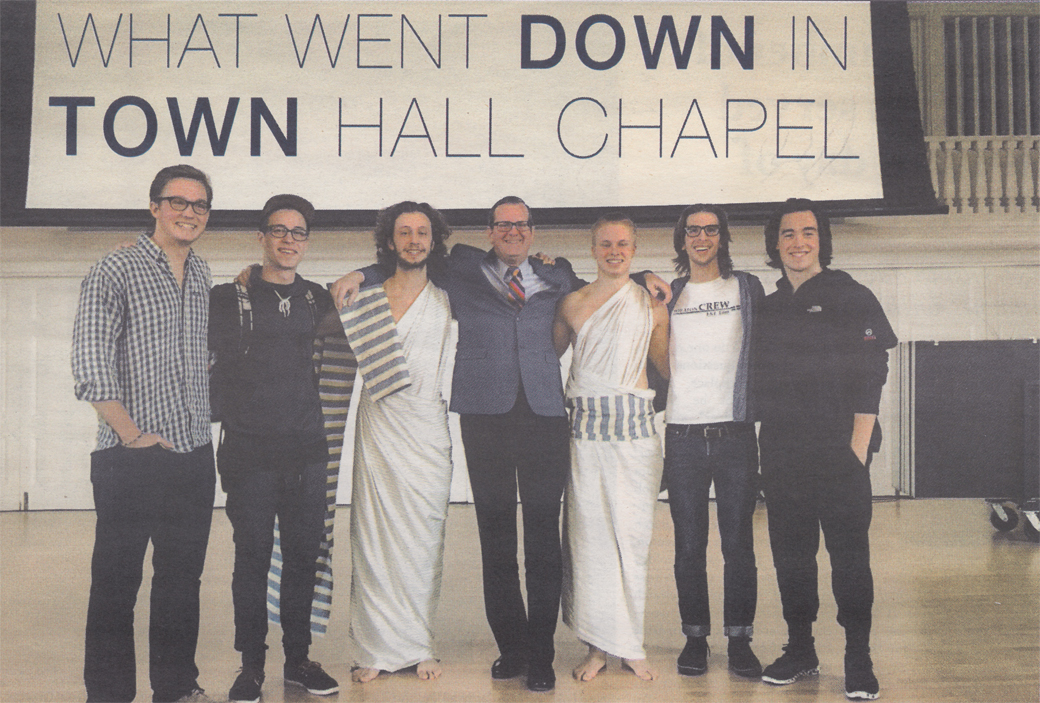
2016
Posing with President Ryken are the six sophomores who worked together to lower a student from the ceiling of Edman Chapel to illustrate the story of the paralyzed man.
It is a long-held belief that Wheaton students are a serious bunch, spending hours each week poring over their books and immersing themselves in theological conversations. But they are not strangers to merry, carefree adventures. For decades, students have banded together to brainstorm silly, good-natured mischief and hatch their schemes, sometimes to both the entertainment and the chagrin of their peers. Even the first president of Wheaton College, Jonathan Blanchard, was a fan of humor and often found himself the beloved target of friendly pranks in the College’s early years. Students’ larks have resulted in timeless memories, still passed down to current generations of Wheaton students by their older classmates. They also serve as a reminder that even college presidents were once students too: At Wheaton, one was the executor of the then-senior class’s greased-pig scheme, a successful attempt to outdo the then-junior class’s rodeo roundup. Still other larks were enjoyed by the entire campus, especially one in which a student replaced the original description of Perry Mastodon’s exhibit with a creative backstory for the creature. The phony tape recounted Perry’s harrowing experiences before reaching his exhibit, including run-ins with a cafeteria as he made his trek to the College. Multiple pranks have even graced annual Town Hall Chapels, providing what some might call a visual aid for New Testament parables.
II. Spirit
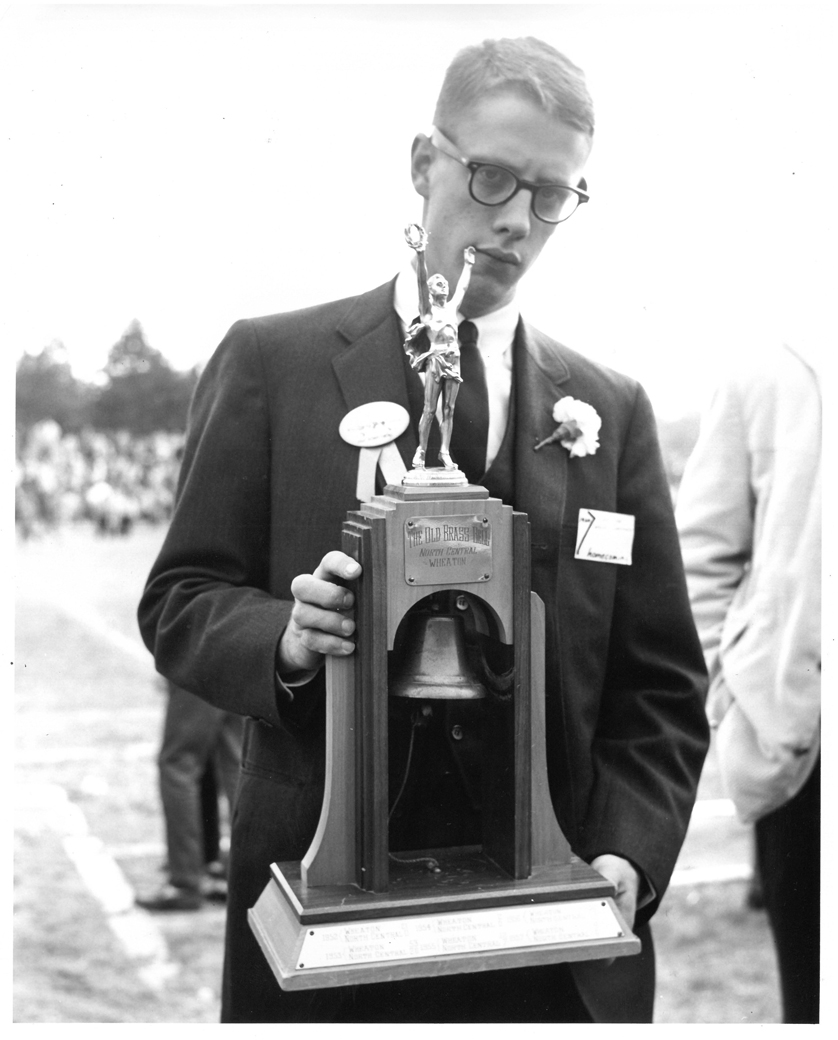
1960s
David G. Robb ’62 holds the Little Brass Bell.
Swim meets, soccer matches, basketball games, and many other athletic activities at Wheaton draw students out of their dorms and alumni back to their alma mater. But one sport in particular bonds the community together with an historic rivalry: Wheaton College football. Dressed in blazing orange and navy blue, Wheaton fans pack McCully Stadium on any given fall Saturday afternoon—especially when the opposing team makes the drive from Naperville, Illinois. The official rivalry between North Central College and Wheaton College dates back to at least 1946, but the mischief started long before then. Legend has it that a New England family, in their travels westward, brought a little brass bell to DuPage County. Years later, a local farmer gained possession of the bell. When he passed, his estate was divided between his two sons: one a North Central College student and the other a Wheaton College student. The son attending North Central inherited the bell, but it moved back and forth between the two colleges for several years before disappearing altogether. Although lost for years, it was rediscovered in the attic of a Naperville home in the early 1940s. To this day, the bell is a symbol of school spirit, awarded to the winner of the annual Wheaton College vs. North Central football game, the “Battle for the Little Brass Bell.”
III. Festivities
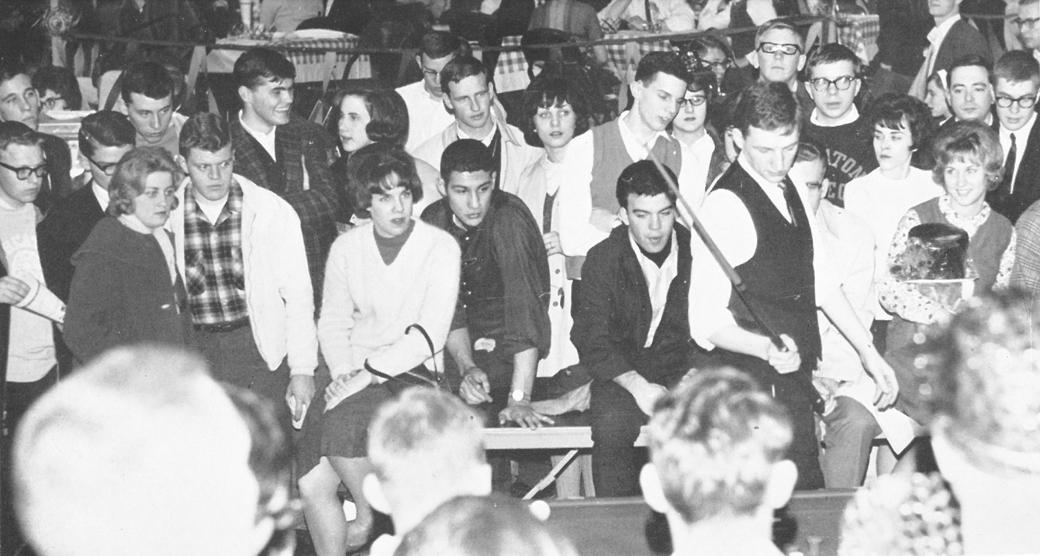
Students gather to watch the bumper pool playoffs at the Campus Fair.
1964
Wheaton students may be beginning their adult lives, but that doesn’t mean they have to give up their childlike spirit and imagination. The College’s history of festivities goes back to its earliest banquets and balls. Students dressed to the nines and arrived with a date, similar to the curent annual President’s Ball (Prez Ball). Some events became less formal, with the addition of festivities that brought simple fun to the campus, especially the Campus Fair. At this biannual event, students packed the quad for an amusement park experience complete with inflatables, bumper pool playoffs, booths, and displays. The fair phased out in the early 2000s, but a wide variety of on-campus events have taken its place. College Union, the student organization behind these larger events, has planned roller disco nights and Air Jam, a lip-sync contest similar to “Battle of the Bands,” in which groups of students perform lip-synced music mash-ups and choreography complete with props and costumes. Their peers show up in swarms to cheer and vote for their favorite ensemble.
IV. Class Escapades
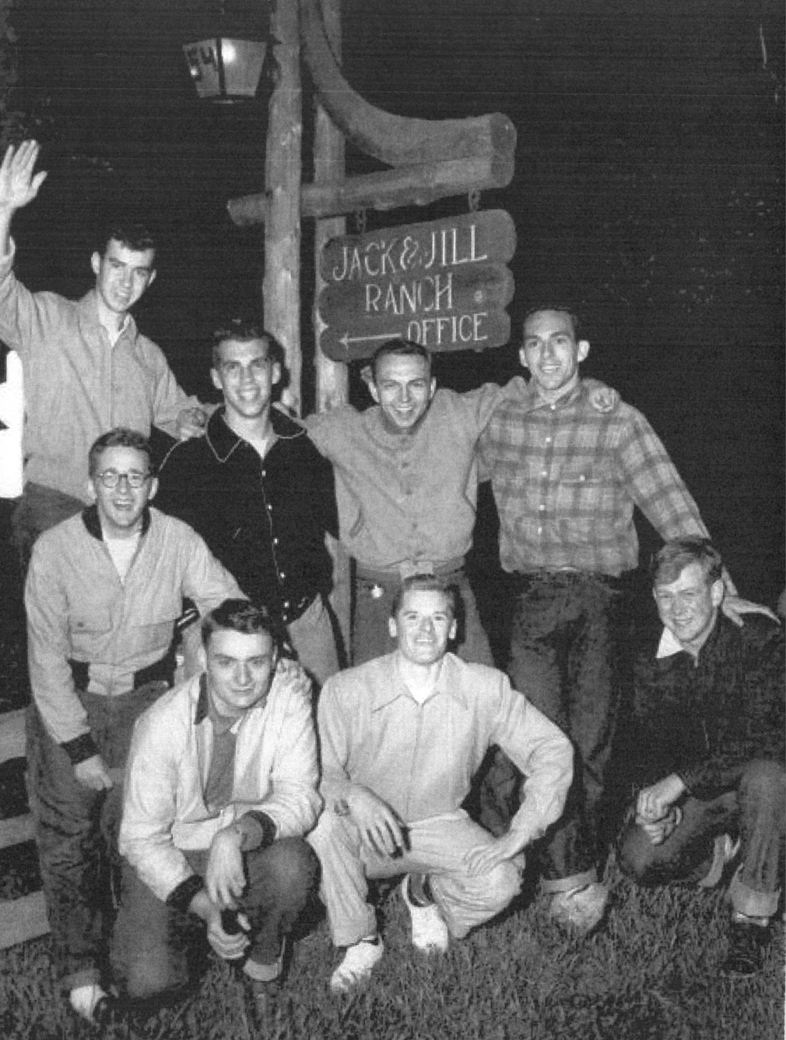
1953
Juniors next to the Jack and Jill Ranch sign, waiting to catch the seniors unaware at the supposedly secret “Senior Sneak” location.
Each fall, another senior class begins their final year of studies. Preparing to walk at graduation is a feat, but nine months provides plenty of time for some fun along the race to the finish. For decades at Wheaton, seniors were ushered in with the longest-standing senior tradition: the Senior Bench rivalry. Oral tradition indicates that the class of 1912 commenced the tradition by obtaining a concrete slab, painting it to leave their class’s mark, and passing it on to the next graduating class. High jinks quickly ensued when the junior class decided to join in the fun for the first time in 1949, starting the decades-long rivalry between the two classes over possession of the bench. In 1925, the senior class began another historic tradition: burying a fruit cake underneath the campus on their first day of class. But it wouldn’t be a senior tradition without taunting the juniors. The junior class was given the entirety of the school year to locate the hidden dessert. If they did not ‘‘take the cake,’’ the reigning seniors would unearth it on their last day of classes. Although this tradition is no longer practiced today, buried cakes were left to decompose beneath the College lawns, and the class of 1939 memorialized their cake with a plaque to mark its location outside Blanchard Hall. Another ritual of days past was the Senior Sneak, in which the senior class fled to a place of solitude each spring, organizing their own worship services, creating brochures, and of course, getting into some shenanigans. Before HoneyRock was the College’s offsite camp, the Jack and Jill Ranch was one of several favorite getaway destinations.
V. Cut a Caper

1996
Students dance in a ladies chain (a common square dancing call) at the College Union–sponsored square dance.
For 143 years, most forms of dancing were banned at Wheaton College. Students were not allowed to participate in any form of social dancing off campus, and except for the occasional square dance, there were no dances held on campus. However, in the fall of 2003, the College’s policy changed to reflect biblical truth instead of merely cultural preferences, and the College sponsored its first dance. College Union, the student organization responsible for large event programming, planned meticulously for the historic event, which attracted news crews from across the nation. Wheaton students skipped and swayed for the first time altogether in one place, and since getting the go-ahead to start dancing, they haven’t stopped. In addition to the annual formal held on Presidents’ Day, students can literally light up the dance floor at the campus-wide Glo Dance each fall. Zoe’s Feet, a ministry of the College that communicates and worships through dance, continues in a tradition of liturgical dance at Wheaton that precedes the social dancing policy change. Other dance-related clubs were founded after the policy change, including the Swing Dance Club, which hosts weekly swing dance evenings with lessons and open dancing on Mondays for anyone interested. Currently, there is a dance studio in Armerding Center for Music & the Arts and, tucked away behind the cardio room in Chrouser Sports Complex, is another, where students can jump and twirl and stretch and kick if they have a hankering to practice their moves. Nearly 20 years after the College’s first hop, Wheaties still know how to cut a caper.
VI. Rites
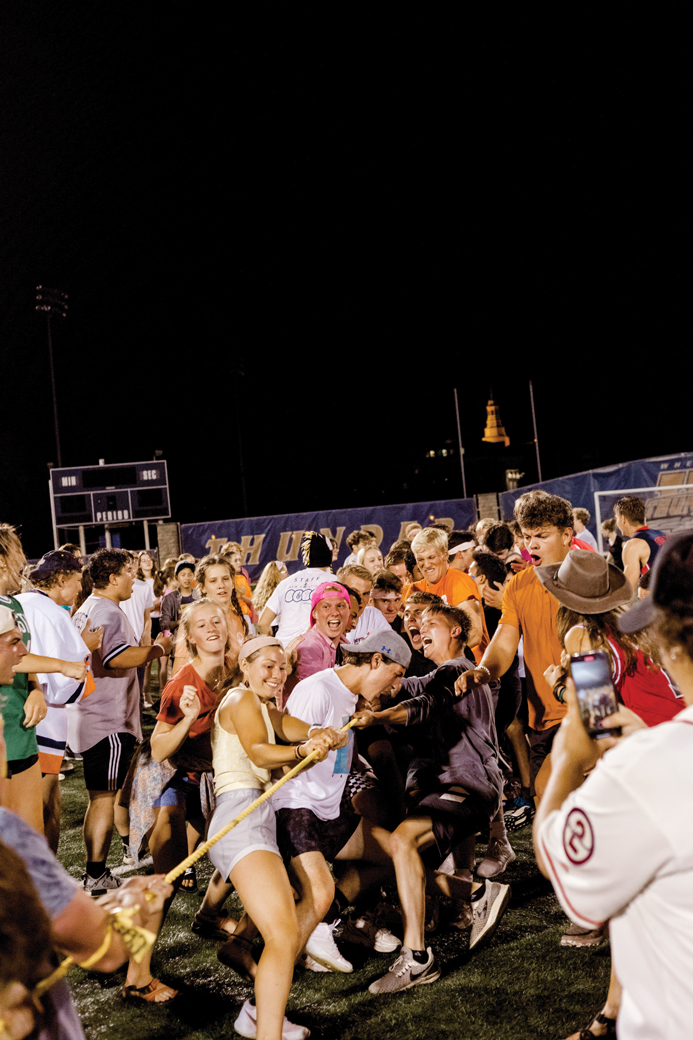
2022
Students compete in tug-of-war competitions at Passage Orientation 2022’s recreation night in Joe Bean stadium.
As part of completing their four years at Wheaton, undergraduate students undergo standard rites of passage, from orientation (now aptly called “Passage”) to graduation. But the experiences in between—ringing the tower bell or going “up the tower” to celebrate an engagement, participating in class-on-class competitions, and learning the class song before the first All-School Communion—are practices that have become so ingrained in undergraduate culture that most are campus-wide rites of passage. These unique experiences make Wheaton College one’s alma mater. Students have inherited the fun from their predecessors (former students), without whom the beloved customs would no longer be in practice today. The Blanchard Bell, which was cast in copper and tin in 1872, is the source of one prominent school tradition to celebrate newly engaged couples, who often leave behind souvenirs and signatures in the tower to make their mark amid the growing collection of memorabilia. On top of schoolwork, extracurriculars, and personal life, numerous generations of students have poured their time into organizing class-on-class competitions, including decades of tug-of-war to see who will be the reigning champion that year. But at the end of the day, rivalries are set aside and unity is restored. The Orientation Committee kicks off the year by welcoming the new Wheaties with their very own class song, composed by upper level students and gifted to the freshmen as they prepare for their first All-School Communion. These freshmen will navigate four years of college life together, and at graduation, they will sing this same song together again at their last Wheaton College Chapel service.
VII. Pastimes
Free time at a college with rigorous classes and countless student involvement opportunities is seen by many as a luxury. But throughout the week, Wheaties occasionally find themselves unburdened by deadlines or schedules, searching for recreation or amusement of some kind to fill their unoccupied time. Long known as the campus hotspot, The Stupe has been the site of student pastimes for decades as a campus dining option, a hangout spot, a place to chat over a warm drink, and the location of a handful of College Union events. Adjacent to The Stupe, now in Lower Beamer, is a full-fledged rec room with ping-pong tables, foosball, pool, and shuffleboard. But before the Beamer Center was the major commons, students gathered in the Memorial Student Center (MSC), where students ate in the old Stupe, friends crammed into the X-room to watch sports and (eventually) play video games, and everybody checked their mailboxes at the old College Post Office (CPO). For years, students have made their own fun. When the nights are too quiet, they participate in residence life, dressing up in costumes and raiding their brother or sister floors. In the ’90s, a group of students created a weekly production of skits called The Salad Years, entertaining their peers with riffs on popular culture and enticing them to come back for more every Friday.

